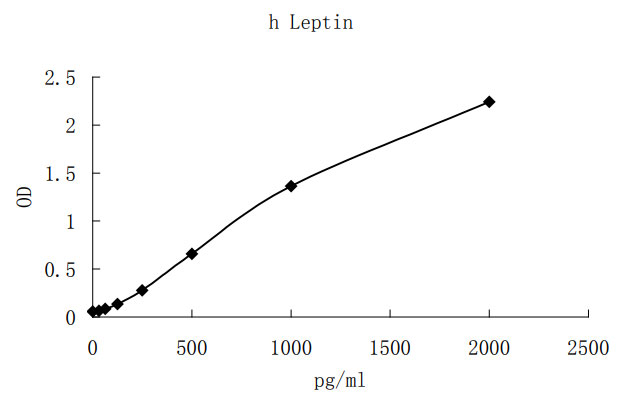Human Leptin (gene name OB) is a 16 kDa, 146 amino acid (aa) residue, non-glycosylated polypeptide that regulates adipose tissue mass and energy balance (1 - 6). Mature human Leptin shares 87% and 84% aa identity with mouse and rat Leptin, respectively(1,7). Human Leptin is active in both the mouse and rat systems (8, 9). Leptin is expressed almost exclusively by adipocytes and its production is influenced by hormones, cytokines and nutrients (5, 7, 10) and circulates in the plasma, crosses the blood-brain barrier, and is present in human breast milk (3 - 6, 11). The human Leptin receptor (designated ObR or LEPR) is a 150 kDa, 1144 aa residue, type I transmembrane glycoprotein of the IL-6 receptor family of Class I cytokine receptors (12, 13). The gene for ObR undergoes considerable splicing, forming variants a-d with cytoplasmic domains of variable length, plus the potentially soluble form ObRe (13, 14). The long form, ObRb (formerly OB RL), is expressed mainly in the hypothalamic arcuate nucleus and is essential for signal transduction (6, 15, 16). In a concentration-dependent manner, Leptin signaling can have diverse effects, causing neurons that express pro-opiomelanocortin (POMC) peptides to reduce food intake, and neurons that express neuropeptide Y and agouti-related protein (NpY and AgRP) to increase food intake (4, 6). Leptin is fundamentally a
Zhang, Y. et al. (1994) Nature 372:425.
Cohen, S.L. et al. (1996) Nature 382:589.
Friedman, J.M. (2009) Am. J. Clin. Nutr. 89:973S.
Farooqi, I.S. and S. O

